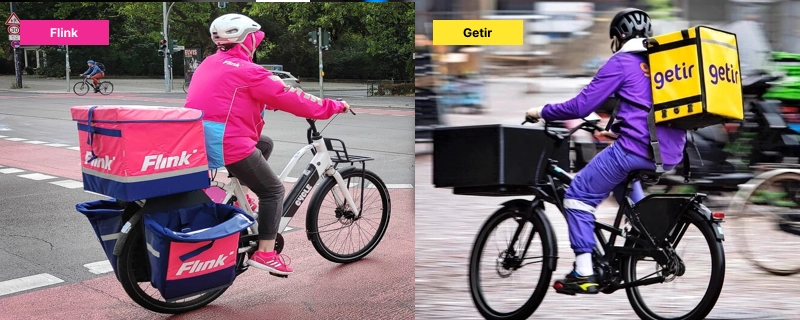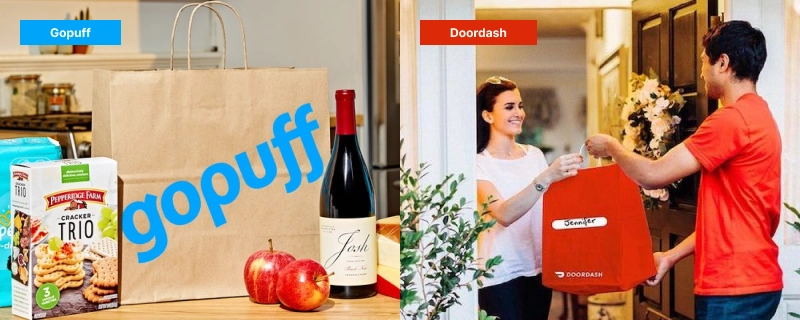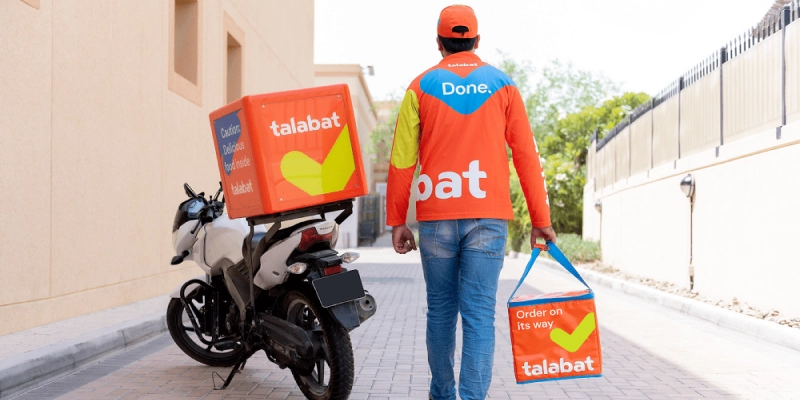Description
The way we shop for groceries has significantly shifted in recent years. The emergence of “quick commerce” (q-commerce) has set a new benchmark for convenience, bringing essential items directly to your door within minutes. This innovative retail model revolutionizes consumer behavior and transforms the global grocery industry.
What is Quick Commerce?
Quick commerce can be described as that part of infrastructure where most of the groceries and basic daily needs are delivered to homes within 10 to 30 minutes and is considered the next stage of evolution in Indian e-commerce as it has the potential to drive the demand even greater for speed, convenience, and last-minute shopping. In contrast to online groceries, delivery schedules are typically adhered to, but the model accommodates an immediate grab for urban customers busy hurrying through life.
From q- commercials, this has given sweet access to conventional shopping into modernity: consumers can get a full range of offerings without being ahead on planning. It’s all the more reinforced for quickness and efficiency, making it a prime essential in any conurbation where crowding makes time scarce.
How Quick Commerce Works
Here’s a deep dive into how it works: quick commerce works through dynamic logistics and technology.
Micro-Fulfillment Centers (Dark Stores)
Dark stores are small, hyper-optimized warehouses located very near residential areas. They are not open to the public, using this entirely to serve customers through online orders. They have a selective stock of fresh, dairy, snacks, beverages, and household essentials high-demand items. This is how q-commerce facilitates fast deliveries with minimum overheads.
AI-Powered Inventory Management
Advanced AI systems analyze real-time consumer demand, seasonality trends, and regional inclinations to stock fulfillment centers efficiently, minimizing waste and ensuring that popular items are always available.
Optimized Network Delivery
Delivery personnel most popularly called riders or shoppers have their route optimization apparatus powered by GPS and AI in the system. This calculates the fastest route based on traffic patterns, time of day, and order priorities.
Easy Application
Intuitive interfaces allow consumers to quickly browse, select, and order groceries in a matter of seconds. Functions, like saved shopping lists, AI-driven recommendations, and real-time tracking, complete the user’s ride.
Proper Staff
Staff employed and trained will make sure the order is picked up, packed, and dispatched quickly. It adds expertise to the entire process, right from order placement to delivery.
Global Leaders in Quick Commerce
The q-commerce market has seen a surge in competition, with companies vying for dominance in various regions:
- Europe: Getir and Flink are leading the charge with promises of 10-minute delivery times, focusing on urban hubs such as Berlin, London, and Paris.

- USA: Gopuff has set the standard through its large network of micro-fulfillment centers. While DoorDash and Instacart continue to expand their speed and efficiency in ultrafast delivery services.

- India: Zepto, Blinkit (formerly Grofers), and Swiggy Instamart have revolutionized the grocery delivery experience in India by proving how super-local delivery meets the specific demands of Indian consumers.

- Middle East: Platforms like Talabat and Careem Now are capitalizing on the region’s high smartphone penetration and preference for convenience.

- Asia: In Southeast Asia, GrabMart and Foodpanda dominate, providing essential services in highly congested urban areas.

Advantages of Quick Commerce
- Ultimate Convenience: Groceries can be received within minutes without planning in advance.
- Time-saving: Busy professionals and families can save much time by eliminating lengthy trips to the supermarket.
- Less Stress: With so much within a few clicks, one gets peace of mind, particularly in emergencies.
- Better Living in the City: Q-commerce has reduced the hassle of negotiating congested streets and long wait times.
Challenges in the Quick Commerce Ecosystem
- Rising Operational Expense: Micro-fulfillment centers and dedicated delivery force require huge investments, making profitability a challenge.
- Carbon Emissions: Frequent, small-scale deliveries increase on-road carbon emissions, prompting the need for sustainability.
- Workforce Management: High attrition and burnout due to demanding schedules necessitate better working conditions.
- Market Saturation: Fierce competition leads to price wars and aggressive customer acquisition strategies.
The Future of Quick Commerce
- Hyper-Personalization: Advanced data analytics will tailor shopping experiences with smart recommendations and promos.
- Linking with Smart Home Devices: Integration with voice assistants will streamline grocery ordering.
- Flying Deliveries: Drone-based delivery systems could reduce costs and enhance speed.
- Environmental Precursors: Companies will invest in electric vehicles, waste reduction, and optimized logistics.
Conclusion
Quick commerce is not just a transient trend. It is perhaps the biggest change in how consumers shop. By integrating state-of-the-art technology with innovative logistics and an informed understanding of consumer needs, q-commerce is raising the performance benchmarks for convenience and efficiency. There are challenges, indeed, but the impressive speed in growth and adaptability suggests that the industry is here to stay, transforming the future of retail and urban living for years to come. The future of quick commerce certainly looks exciting and rewarding as companies upgrade their models to adopt a more sustainable approach.





